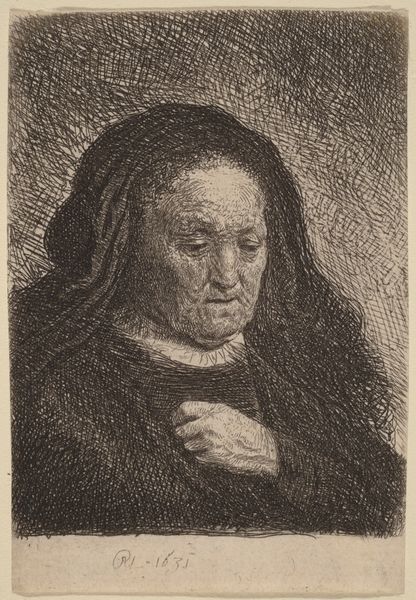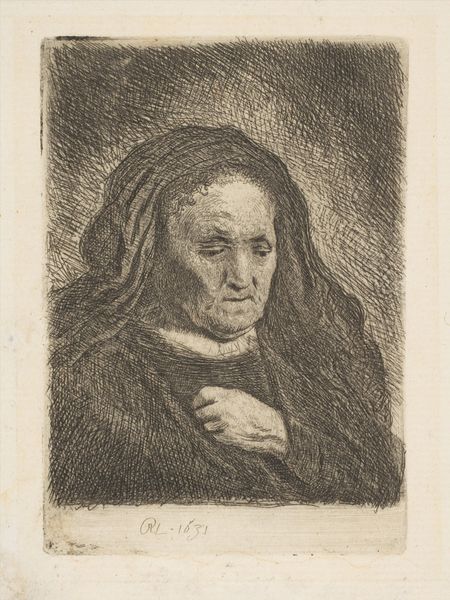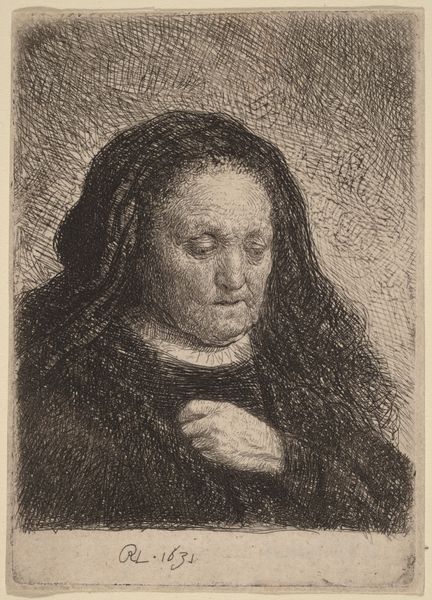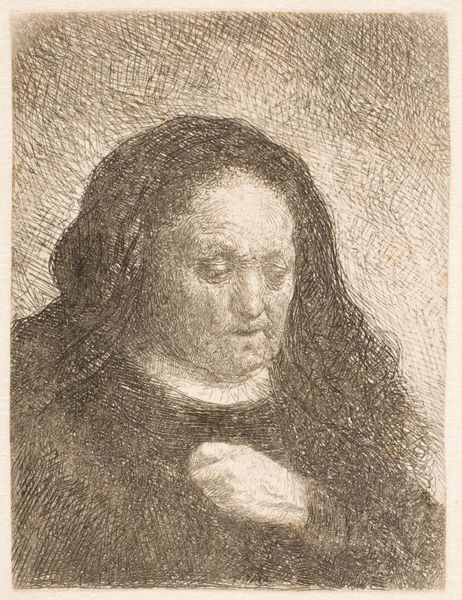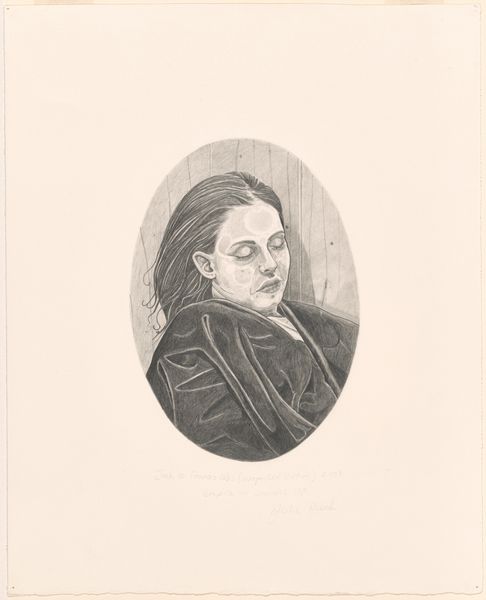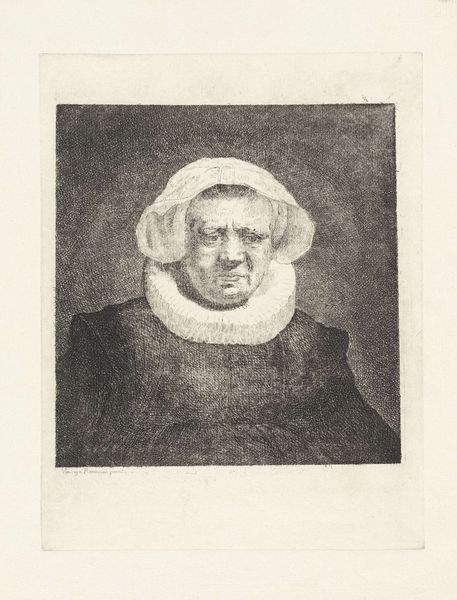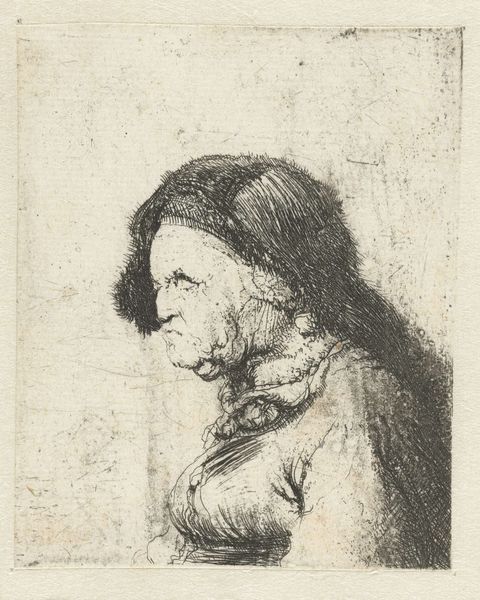
Dimensions: height 93 mm, width 66 mm
Copyright: Rijks Museum: Open Domain
This is a small etching of Rembrandt’s mother, made in 1631. The image is created by drawing lines into a metal plate, which is then submerged in acid. The acid bites away at the exposed metal, leaving behind grooves that hold ink, a process called ‘biting’. The quality of the lines in the final print is dictated by the artist’s hand and the varying strength of the acid. Look closely, and you can see how Rembrandt has used these effects to create a powerful sense of light and shadow. The dense cross-hatching around her head gives way to finer, more delicate lines on her face, capturing the texture of her skin. Rembrandt was fascinated by the human face, and etching allowed him to explore its nuances with incredible detail. Because prints can be reproduced, this intimate image of his mother could reach a wide audience, challenging traditional hierarchies of artistic value that separated printmaking from painting.
Comments
No comments
Be the first to comment and join the conversation on the ultimate creative platform.
